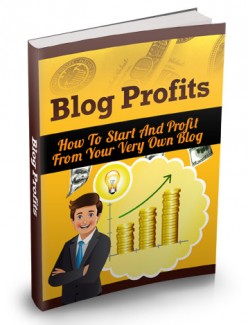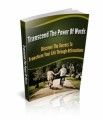 License Type: Master Resell Rights
License Type: Master Resell Rights  File Size: 2,114 KB
File Size: 2,114 KB File Type: ZIP
File Type: ZIP
 SKU: 50625
SKU: 50625  Shipping: Online Download
Shipping: Online Download
Ebook Sample Content Preview:
WordPress lets you write either posts or Pages. If you are just writing a regular blog entry, you write a post. These blog posts automatically appear in reverse chronological order on your blog's home page.
Pages are for content such as "About," "Contact Us," “Legal”, and so on. Pages exist outside of the normal blog chronology, and are often used to present timeless, or “evergreen” information about you or your blog site. Evergreen information is information that doesn’t change from day to day. You can use Pages to organize and manage any content.
In addition to the generally required "About" and "Contact" Pages, other examples of common pages include Copyright, Disclosure, Legal Information, Reprint Permissions, Company Information, and Accessibility Statement.
In general, Pages are very similar to Posts in that they both have Titles and Content and can use your WordPress Theme templates files to maintain a consistent look throughout your site.
To create a new page, simply hover your cursor over the Pages button on the left side of the dashboard, then click on the “Add New” on the drop down menu. This will create a template that you can use to create any page you want. You can include text, images, links, videos or whatever you want on your pages.
When you are finished creating your page, just save it and it will appear as part of your blog home page whenever anyone visits it. You can delete a page at any time by clicking on the “All Pages” button on the Pages drop down menu, checking the page you want to get rid of and then clicking on the delete button.
Writing Your Blog: A Primer
Once you have your WordPress account, have selected a theme and have added whatever plug-ins and widgets you would like, it’s time to start creating content for your blog. If you have been thinking about creating your blog for a while, you probably have lots of ideas.
It’s a good idea to create a “tickle file” that you can use to record blog ideas as they come to you. This can be a Word file on your laptop, a notepad on your smartphone, or even a paper notebook that you can carry around with you in your pocket. As an idea comes to you, wherever you are, jot it down. This will serve as a great resource tool later when you are looking for new blog topics.
Before you start publishing your blog posts, you probably want to have a few timeless “canned” posts that you can keep on hand for when you are too busy to write or are struggling to come up with new ideas. These can help bridge any content gap that you have.
How Often Should You Post?
When you first start your blog, you probably are brimming with ideas and will want to publish all the time. That’s fine, but just remember that a month or six down the line, you may not have as much enthusiasm for writing on your blog as you do when you are just starting out, so if you get your readers accustomed to receiving a new blog post every day, it may be hard to keep that pace later. A better plan is to start out with just a couple of blogs posts per week. That way you aren’t committing to a publishing schedule that you may not be able to sustain.
You should try to stick to the same general publishing schedule all the time because as you grow a loyal readership following, they will begin to look for your blog on certain days. For example, if you publish a new blog post every Monday and Friday, they can expect to see fresh content on those days.
Types of Blogs & Blog Posts
There are as many types of blog posts as there are blogs. In other words, millions. The type of blog post you publish will depend on what you want to achieve. You may want to share your passion for your subject matter with other enthusiasts. Or you may want chronicle occurrences in your everyday life, such as your career advancement, battling a serious illness, or your social life.
Generally, blog posts can be categorized into seven major categories:
Personal -- This is the broadest category and includes blog posts people write about their own lives or topics that interest them, such as politics, music, family, travel, and fitness.
Top Ten of Top Tips - These types of blog posts typically list your top ten choices of whatever subject you like, or offer your top tips on a subject.
How-to Blog Post - These are blog posts that education people on the best ways to perform individual tasks. They are frequently in form of video blog posts.
Reviews - There are lots of blog posts that share reviews about restaurants, movies, games, music, booksand so on.
Rant Post - These are blog posts that let you give your opinion on whatever topic you like. It’s your blog, so you can be as opinionated as you like.
Video Post - This is when you make a brief video and post it on your blog. It also can be posted on YouTube.
Audio/Podcast - Make an audio recording and post is as a blog post. You also can post it on iTunes.
Promotional Post - These are blog posts that promote specific products, offerings and events.
Resource Posts - With these blog posts, you list top resources for whatever topic you are writing about.
Developing Blog Topics
As a regular blogger, you will need to be continually looking for new ideas for blog posts you can share with your readers. That means you will need to take time to gather ideas. One of the best and easiest ways to do this is by looking at what other people who write blog posts on your topic are doing.
Whenever other bloggers subscribe to your blog, you should consider subscribing to theirs as well. Not only will it keep you in touch with the online community that shares your enthusiasm for your topic, but it also will provide you with a steady supply of new blog post ideas delivered directly into your inbox.
Before you write a single word, your first week should be spent gathering ideas, clarifying your subject and looking at what other people are doing in order to solidify the concept of the new blog post you want to create.
- File Size:2,114 KB
- License: Master Resell Rights
- Category:Ebooks
- Tags:2014 Ebooks Master Resale Rights








